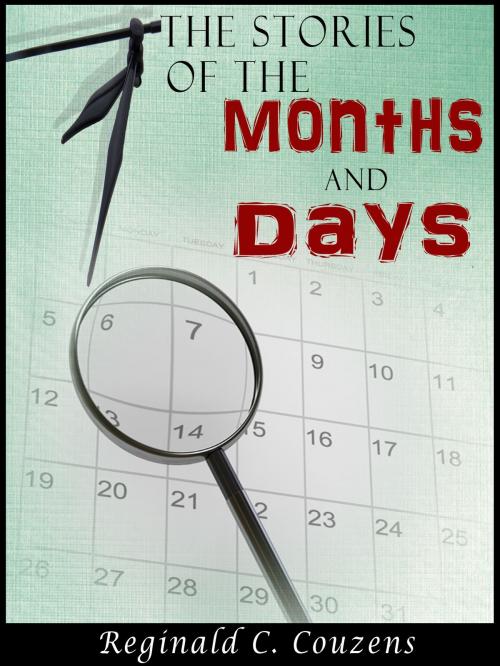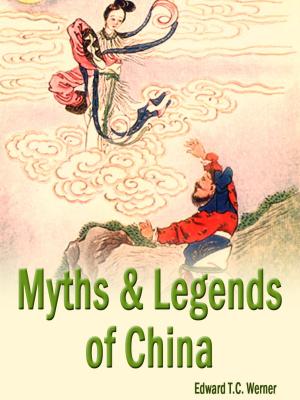The Stories Of The Months And Days
Nonfiction, Social & Cultural Studies, Social Science, Cultural Studies, Customs & Traditions, Folklore & Mythology| Author: | Reginald C. Couzens | ISBN: | 9781623941178 |
| Publisher: | AppsPublisher | Publication: | October 4, 2012 |
| Imprint: | Language: | English |
| Author: | Reginald C. Couzens |
| ISBN: | 9781623941178 |
| Publisher: | AppsPublisher |
| Publication: | October 4, 2012 |
| Imprint: | |
| Language: | English |
The Stories Of The Months And Days
by Reginald C. Couzens
How familiar to us are the names of the months, and the days of the week, and yet how few of us know to whom we owe these names or what a wealth of meaning they possess. They have come to us from the past, from the time when people worshiped many gods and explained the wonders of nature in their own simple way. But before listening to the stories which these names can tell us, we ought first of all to remind ourselves of the way in which our divisions of time came into being.
We all know that the earth turns round on its own axis, giving us periods of light and darkness, which we call day and night. The word " day", which comes from a very, very old word meaning "to shine", really means, of course, the time during which the earth is lit up by the sun, but it has also come to mean the time which the earth takes to revolve, as from sunrise to sunrise, sunset to sunset, midday to midday. The Greeks measured the day from sunset to sunset, the Romans from midnight to midnight, the Babylonians from sunrise to sunrise. The day, in this sense, became the first measurement of time.
The day, however, is a very short period, so another measurement was taken for a longer space of time, and this measurement was suggested by the changes in the moon. It was noticed that the moon altered in shape, beginning with the new moon, waxing to the full moon and then gradually waning. So the space of time from one new moon to the next--about 29-1/2 days--was called a moonth or month, afterwards known as the lunar month (lunar, from Latin; Luna = moon).
The next measurement of time, the year, was suggested by the seasons. People noticed that there was a period of heat and a period of cold, a time when the trees and plants put forth their buds, and a time when all Nature seemed to die, and these periods became known as the Seasons--Spring, the time when plants spring up; Summer, the mild or gentle season; Autumn, the season of increase, when the fruits of the earth are gathered in; Winter, the windy or cold season.
The Stories Of The Months And Days
by Reginald C. Couzens
How familiar to us are the names of the months, and the days of the week, and yet how few of us know to whom we owe these names or what a wealth of meaning they possess. They have come to us from the past, from the time when people worshiped many gods and explained the wonders of nature in their own simple way. But before listening to the stories which these names can tell us, we ought first of all to remind ourselves of the way in which our divisions of time came into being.
We all know that the earth turns round on its own axis, giving us periods of light and darkness, which we call day and night. The word " day", which comes from a very, very old word meaning "to shine", really means, of course, the time during which the earth is lit up by the sun, but it has also come to mean the time which the earth takes to revolve, as from sunrise to sunrise, sunset to sunset, midday to midday. The Greeks measured the day from sunset to sunset, the Romans from midnight to midnight, the Babylonians from sunrise to sunrise. The day, in this sense, became the first measurement of time.
The day, however, is a very short period, so another measurement was taken for a longer space of time, and this measurement was suggested by the changes in the moon. It was noticed that the moon altered in shape, beginning with the new moon, waxing to the full moon and then gradually waning. So the space of time from one new moon to the next--about 29-1/2 days--was called a moonth or month, afterwards known as the lunar month (lunar, from Latin; Luna = moon).
The next measurement of time, the year, was suggested by the seasons. People noticed that there was a period of heat and a period of cold, a time when the trees and plants put forth their buds, and a time when all Nature seemed to die, and these periods became known as the Seasons--Spring, the time when plants spring up; Summer, the mild or gentle season; Autumn, the season of increase, when the fruits of the earth are gathered in; Winter, the windy or cold season.















